
The large tortoiseshell or blackleg tortoiseshell is a butterfly of the family Nymphalidae.
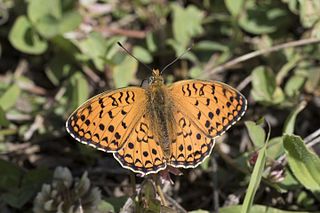
The Niobe fritillary is a species of butterfly in the family Nymphalidae.
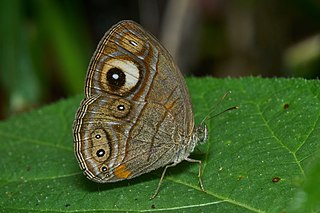
Mycalesis patnia, the glad-eye bushbrown, is a satyrid butterfly found in southern India and Sri Lanka.
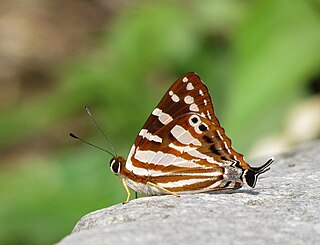
Dodona egeon, the orange Punch, is a small but striking butterfly found in the Indomalayan realm - in Mussoorie to Assam, Burma (nominate) and Peninsular Malaya that belongs to the family Riodinidae.

Melitaea diamina, the false heath fritillary, is a butterfly of the family Nymphalidae.

Curetis bulis, the bright sunbeam, is a species of butterfly belonging to the lycaenid family. It is found in Asia.
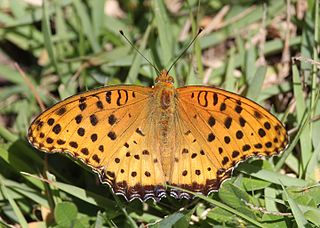
The Indian fritillary is a species of butterfly of the nymphalid or brush-footed family. It is usually found from south and southeast Asia to Australia.
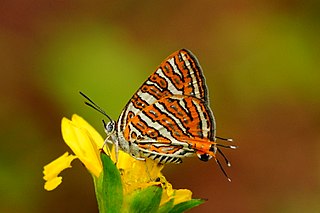
Cigaritis vulcanus, the common silverline, is a species of lycaenid or blue butterfly found in Asia. It was first described by Johan Christian Fabricius in 1775.

Hippotion celerio, the vine hawk-moth or silver-striped hawk-moth, is a moth of the family Sphingidae. It was described by Carl Linnaeus in his 1758 10th edition of Systema Naturae.

The Silver Appleyard is a British breed of domestic duck. It was bred in the first half of the twentieth century by Reginald Appleyard, with the aim of creating a dual-purpose breed that would provide both a good quantity of meat and plenty of eggs.
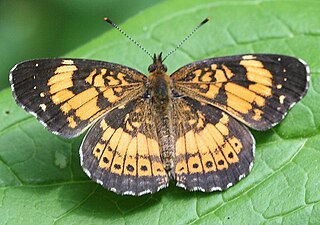
Chlosyne nycteis, the silvery checkerspot, is a species of Nymphalinae butterfly that occurs in North America. It is listed as a species of special concern in Connecticut and Maine, and is believed extirpated in Connecticut, Massachusetts, and New Hampshire.

The Argenté rabbit is one of the oldest breeds of French show rabbits. The British Rabbit Council (BRC) recognises six varieties: Argenté Bleu, Argenté Brun, Argenté Crème, Argenté de Champagne, Argenté Noir, and Argenté St Hubert. The American Rabbit Breeders Association (ARBA) recognises the Champagne d'Argent, the Crème d'Argent and the Argenté Brun. A rare variety, the Argenté Clair, is not currently recognised by either the BRC or ARBA.

Trapezites iacchoides, commonly known as the silver studded ochre or iacchoides skipper, is a species of butterfly in the family Hesperiidae. It is endemic to Australia, where it occurs in New South Wales, Queensland and Victoria. It inhabits cool, temperate, open eucalypt forests.

Charaxes pelias, the protea emperor or protea charaxes, is a butterfly of the family Nymphalidae, and is endemic to the Cape Provinces in South Africa.
Roxita adspersella is a moth in the family Crambidae. It was described by Pieter Cornelius Tobias Snellen in 1893. It is found in Sri Lanka.
Ambia albiflavalis is an African moth in the family Crambidae. It was described by George Hampson in 1917. The type locality is Nigeria.
Ambia chrysogramma is a moth in the family Crambidae. It was described by George Hampson in 1917. It is found on Samoa.
Ambia cymophoralis is a moth in the family Crambidae described by George Hampson in 1917. It is found on St Aignan Island in the Louisiade Archipelago of Papua New Guinea.
Ambia fulvicolor is a moth in the family Crambidae. It was described by George Hampson in 1917 and it is found in New Guinea.













